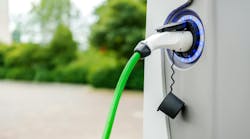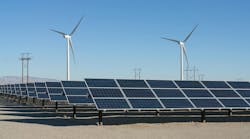This article is a follow-up to “A Faster Horse,” in which I briefly discussed the origin of investor-owned utilities. In that article I referred to five characteristics of natural monopolies and in this final of five follow-up articles we take a brief look at another of those characteristics — the fact that natural monopolies require a direct connection to customers — and the impact of current technology developments on it.
Thomas Edison once said, “We shall have no better conditions in the future if we are satisfied with all those which we have at present.” As we have explored in recent articles, the grid of today is not that different from the grid of 100 years ago. We have made progress interconnecting regions, improving reliability, and adding intelligence. However, the overall structure is not that different. But it is starting to change.
Direct connection to customers has always been necessary for the delivery of electricity. Today, conceivably, it could be done by battery delivery, at least in some scenarios. But the infrastructure required for connecting customers to the grid and for moving the power from generation to customer has required huge capital investments. As per our previous discussion about minimum economic scale and capital intensity, two distribution companies must have direct connections to the same customers in order to compete. More interestingly, this also implies a level of immobility on behalf of customers and the supply to them. This means that customers have little or no choice (usually none) regarding who may provide the specified goods or services to them.
Restructuring has already changed some aspects of this for electricity supply. For reference, consider the telecommunications sector. The erosion of the requirement for a direct connection to the service provider brought about tremendous changes when long distance service was opened up for competition. Soon thereafter, wireless carriers changed the whole nature of the industry and created new opportunities for consumer electronics companies.
Now, in theory at least, the power industry could supply electricity in the form of charged batteries to a standalone customer, though that would not be scalable today. But what does a direct connection to the customer mean when customers can also supply their own power? And what if a customer is being supplied in a vehicle-to-grid (V2G) scenario? When the vehicle is connected to the customer’s premises, does that count as a direct connection? What if the car were to be driven to a neighbor’s house where it could also provide power? Or even somewhere in another utility’s service territory? All these scenarios are increasingly plausible.
These are the types of scenarios we have been discussing for a long time. I can recall comparing future electric vehicles (EVs) with mobile phones in the 1990s and wondering how electricity roaming would work, and what data we would need to collect to make it work. Yet, here we are today with the technology to make it work. Nissan recently announced that the new Leaf, with a 40-kWh battery, will have the capability to charge your home. The company is already engaged in pilots to demonstrate this.
Going back to the reason for these articles — to challenge whether grid modernization and current technologies are eroding the characteristics of natural monopolies — we need to ask: will we soon have the ability to purchase electricity and services from producers/sellers in multiple locations and without direct connections? Retail competition means that although we are connected to our distribution utilities we are not technically directly connected to retailers since retailers move the power over the utility’s grid (in states with retail competition). The replaceable battery example goes one step further and removes direct connection completely. So, the answer to the question of erosion of conditions of natural monopoly within the power industry is definitely yes. But where does that leave the status of natural monopoly characteristics overall?
The following final points summarize how grid modernization is eroding the characteristics of the utility as a natural monopoly:
- Capital intensity and minimum economic scale: Large, central station generators with interconnected transmission and distribution (T&D) infrastructure is still the best model. But the barriers to entry for generation and even distribution have been significantly reduced with the introduction of microgrids, distributed energy resources (DERs), and renewables.
- Non-storability with fluctuating demand: System load fluctuations are arguably increasing but fluctuating supply is now a concern. The ability to store energy and electricity is also increasing but as transactive energy systems and flexible loads help match demand to supply, more stability will result.
- Locational specificity and locational rents: Grid modernization opens up opportunities for small-scale distributed generation and we have flexibility to locate generation at more places geographically, and at different voltages than ever before. The value of location is changing.
- Necessary or essential for the community: Electricity is more essential today than it has ever been but the dependence on the utility for that power has been significantly reduced for those that can afford their own solutions.
- Involving direct connection to the customer: In many states the customer is not directly connected to the supplier since that is not the utility anymore. Movable storage changes the picture completely as does self-generation by customers.
As I discussed in my original article, the natural monopoly argument is still strong, but it continues to weaken because we will still need shared infrastructure even as renewable energy and DERs continue to grow. At least for now.


